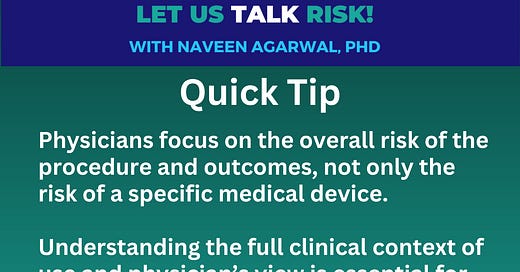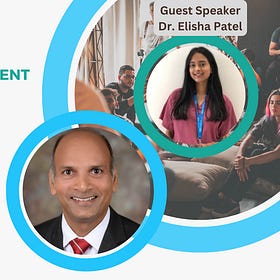Quick Tip: Understand the physician's view on risk early in development
Getting early feedback on a physician's view about device risk in the clinical context is essential for success.
Generally speaking, design and development of medical devices is primarily driven by engineering considerations focused on desired functionality. Although, early clinical input is highly desired, direct access to physician’s and other users of a device in the clinical setting is not available to the design team. Risk practitioners should be aware of this potential blind spot as they navigate the complexity of medical device design, development, regulatory approval and post-commercialization monitoring.
Physicians expect approved devices to be reliably safe and effective in their hands. Their view on risk is not limited to only a specific device; rather they think about the the risks of a specific procedure in their attempt to maximize the outcome for an individual patient. Therefore, a medical device malfunction during clinical use is likely to be treated more as a nuisance or inconvenience at best, or the cause of avoidable significant harm to the patient in the worst case. Reporting of adverse events is generally handled by the staff who may not have enough clinical information to inform the manufacturer.
Relying on post-market adverse events on a similar device, therefore, may not be entirely useful in identifying potential issues in the clinical use environment. It is important to plan for this gap in early product development and actively seek clinical input either from internal experts or an external panel of key opinion leaders with clinical experience.
Here are a few insights from a Let’s Talk Risk! conversation with a physician
Understanding a physician's view on risk
Note: this article highlights key insights gained from a conversation with Dr. Elisha Patel as part of the Let’s Talk Risk! with Dr. Naveen Agarwal series on LinkedIn. Listen to the full recording of the discussion below. Key takeaways Physicians focus on the risk of the procedure and outcomes:





